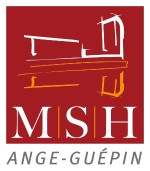- Index
- >Research Projects
- >Completed Projects
- >REV-PME
Diffusion of revenue management techniques in tourism and cultural SMEs
Diffusion des techniques du revenue management dans les PME touristiques et culturelles
Managed by Sourou Meatchi, lecturer, ESTHUA.
In the context of an "Amorçage" financing, by the MSH Ange-Guépin
Presentation
Invented at the end of the 1970s under the name yield management, revenue management (RM) brings together a set of levers for managing offers and prices in service companies with restricted capacities (transport, hotels, theme parks, etc.). The practice of RM is based on very advanced technological and IT tools (e.g. GDS, PMS and RMS), on robust probabilistic models (e.g. the EMSR model) and increasingly on artificial intelligence techniques (algorithms, machine learning, neural networks, etc.). Since its appearance in the air transport sector, MR has enabled many companies to substantially increase their revenues. According to an article in the Wall Street Journal, the adoption of MR allowed Continental Airlines to increase its profits by $50-100 million in the 2000s (Weatherford and Kimes, 2003). Today, RM is one of the fundamental strategic levers for service companies characterized by high fixed costs and erratic demand.
However, while RM has become commonplace in air transport and chain hotels, this pricing system is still underused in small and medium-sized enterprises (SMEs). However, operational management research (e.g. Kimes and Wirtz, 2015) shows that there are many levers that even small service companies can use to optimise the management of their offers in the face of fluctuating and volatile demand. Despite the advantages offered by the RM, few SMEs (small hotels, campsites, restaurants, museums, etc.) have a systematic and structured approach to this practice.
The problem of this research is to understand why RM techniques are not sufficiently used in tourism and cultural SMEs and how these SMEs can practice RM while limiting the potential risks linked to this technique.
The objective of this research is threefold.
First, by mobilizing the theory of the diffusion of technological innovations (Rogers, 1995), our research aims to better understand the motivations and obstacles related to the practice of MR in SMEs in the tourism and cultural sectors.
Secondly, the project aims to study the issues of data science in the practice of MR at the SME level in the era of digital marketing and artificial intelligence.
Finally, the third objective of the project is to suggest a set of recommendations on MR techniques that SMEs can use without the potential risks associated with this practice.
Funding



